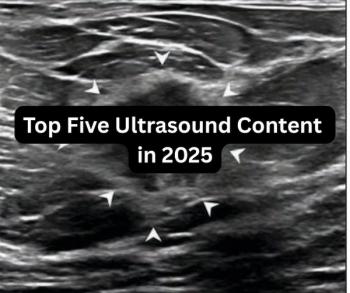
Emerging CCTA Research Shows Prognostic Value of AI Quantification of Plaque Burden for Assessing Cardiovascular Risks
In a recent interview, Timothy Fairbairn, Ph.D., and Fatima Rodiguez, M.D., discussed new research findings, recently presented at the American Heart Association (AHA) conference, showing the value of AI-powered quantification of plaque burden from CCTA exams for predicting adverse cardiovascular outcomes.
The use of artificial intelligence (AI) to quantify plaque burden from coronary computed tomography angiography (CCTA) exams offers significant prognostic insight into stratification for myocardial infarction (MI), cardiovascular mortality and overall mortality risk, according to new data presented at the American Heart Association (AHA) conference.
For the multicenter study, a sub-analysis of the FISH&CHIPS trial, researchers evaluated an AI-enabled software (AI-CPA, Heartflow) for predicting cardiovascular risks in 7,899 patients who underwent CCTA exams.
In a multivariable analysis, the study authors determined that patients with stage 3 or stage 4 plaque had a 2.69 to 3.42 times higher MI risk, a 4.33 to 8.3 times higher risk of cardiovascular death and a 3.17 to 4.82 times higher overall mortality risk.
In a recent interview with Diagnostic Imaging, lead study author Timothy Fairbairn, Ph.D., emphasized that these findings with plaque burden were independent of patient age, risk factors, coronary stenosis severity and fractional flow reserve (FFR) assessment with computed tomography (CT).
“I think traditionally or in the past, we have either underplayed (plaque burden or) not reported it accurately. Therefore, we've actually really been missing a lot of patients … and they're the patients who probably will go on and have the events that you can actually prevent,” posited Dr. Fairbairn, a cardiologist at Liverpool Heart and Chest Hospital in Liverpool, U.K. “So it's really … providing the information to allow people to shift the mindset as well as obviously being able to quantify (plaque burden) accurately.”
The research also affirmed that total plaque volume and non-calcified plaque volume were linked to higher risks for future cardiac events whereas calcified plaque volume and low-attenuation plaque volume were not. In the interview, Fatima Rodriguez, M.D., cited the ability of the AI-CPA to differentiate between different types of plaque.
“The AI-based plaque analysis is particularly helpful to see not just the plaque burden, but what type of plaque is present. For example, if you have a large burden of non-calcified plaque, that would motivate me to target lower LDL thresholds and perhaps pick stronger therapies to reach those goals. It's also incredibly helpful as a way to monitor progression and, ideally, regression of high-risk plaque, and really to motivate patients to stay adherent to therapy,” emphasized Dr. Rodriguez, the section chief of preventive cardiology at Stanford University.
(Editor’s note: For related content, see “
For more insights from Drs. Fairbairn and Rodriguez, watch the video below.
Reference
- Fairbairn T. Coronary Ct angiography plaque as a predictor of death, cardiovascular death and myocardial infarction. Presented at the American Heart Association conference, November 7-10, 2025, New Orleans.
Newsletter
Stay at the forefront of radiology with the Diagnostic Imaging newsletter, delivering the latest news, clinical insights, and imaging advancements for today’s radiologists.




























